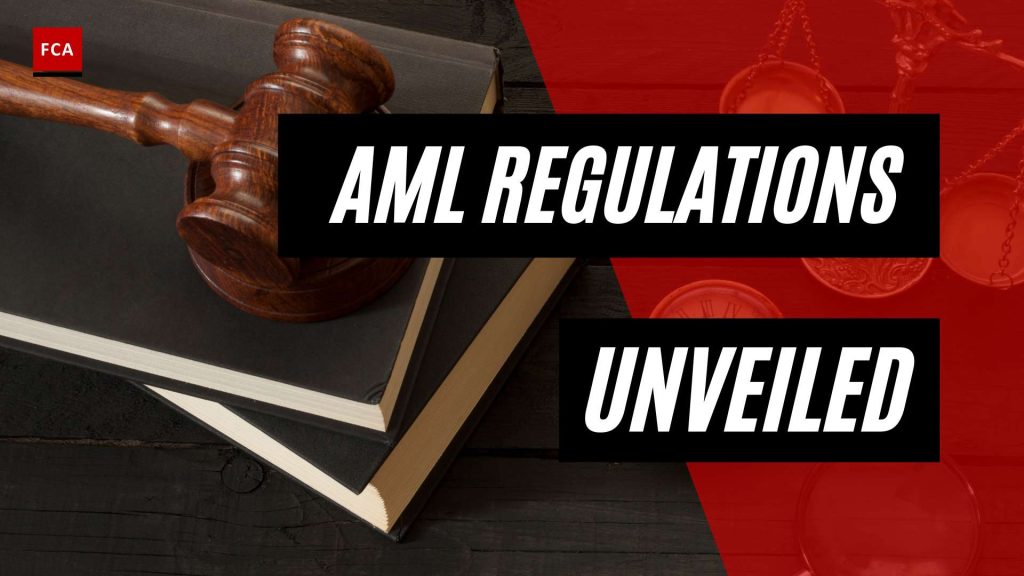Understanding AML Regulations
Anti-Money Laundering (AML) regulations are a crucial part of the global financial system, designed to prevent illegal activities such as money laundering and terrorism financing. Understanding these regulations is key for professionals working in compliance, risk management, and anti-financial crime.
Historical Overview of AML Laws
The efforts to combat money laundering were first consolidated into a single piece of legislation in the United States with the Bank Secrecy Act of 1970. This Act provided the government with the authority to require financial institutions to keep records and to report large currency transactions.
In 2001, the USA PATRIOT Act expanded the definition of financial institution to include a broad range of entities such as insurance companies, securities brokers, dealers in precious metals, and others (Investopedia). This Act also required the establishment of regulations that would govern the operations of non-bank financial institutions, and imposed Know Your Customer (KYC) requirements on broker-dealers.
On the other side of the Atlantic, the European Union has implemented multiple directives to combat money laundering and terrorist financing, including the Third Money Laundering Directive (2005) and the Fourth Money Laundering Directive (2015) (Dow Jones).
Key Provisions in AML Regulations
AML regulations contain several key provisions that financial institutions must adhere to. These include:
-
Record Keeping: Financial institutions are required to keep detailed records of their customers’ transactions. This includes the amount of the transaction, the parties involved, and the date and time of the transaction.
-
Reporting: Any transaction over a certain threshold must be reported to the relevant authorities. This is to ensure that large transactions, which could potentially be linked to illegal activities, are properly monitored.
-
Customer Due Diligence (CDD) and Know Your Customer (KYC): These measures require financial institutions to verify the identities of their customers and assess their risk profiles. This helps to prevent financial institutions from being used by criminals to launder money.
-
Risk Assessment: Financial institutions must conduct regular risk assessments to identify potential vulnerabilities to money laundering and implement measures to mitigate these risks.
-
Internal Controls: Financial institutions must establish procedures and controls to ensure compliance with AML regulations. This includes appointing a designated officer to oversee the institution’s AML compliance program.
-
Training: Employees must receive regular AML training to ensure they understand their obligations under AML laws and can identify potential AML red flags.
Understanding these key provisions is the first step in implementing an effective AML compliance program. For an in-depth look at the AML process, from identification and assessment to AML investigation, explore our collection of resources on AML basics.
Implementing AML Compliance Program
Implementing an effective AML (Anti-Money Laundering) compliance program is a crucial task for financial institutions. It involves a strategic approach that includes conducting a risk assessment, establishing internal controls, and performing independent testing.
Importance of Risk Assessment
In developing a robust BSA/AML compliance program, the first critical step is conducting a risk assessment. Financial institutions must identify inherent risks related to their products, services, customers, and geographic locations. This process helps develop a tailored risk profile that aligns with their business operation (Lowers Risk Group).
Risk assessment is a fundamental component of AML compliance as it provides the basis for the program’s design and implementation. It allows institutions to understand where they are most vulnerable to money laundering activities, thus enabling them to prioritize mitigation efforts and allocate resources effectively.
Role of Internal Controls
Internal controls play a significant role in a BSA/AML compliance program. These controls involve the evaluation of policies, procedures, and processes to ensure AML compliance, including aspects related to personnel, structural elements, and record keeping.
A successful AML compliance program should focus on internal practices and systems for detecting and reporting financial crime. It should include regular reviews to assess effectiveness in meeting compliance standards, ensuring that employees are aware of their roles and responsibilities within the system (Flagright).
Significance of Independent Testing
Independent testing is a recommended practice for AML compliance. Typically conducted every 12 to 18 months, these tests are essential for ensuring the effectiveness of the AML program. Higher-risk financial institutions may require more frequent audits, which should be responsive to the organization’s risk profile.
AML compliance programs should include continuous monitoring, testing, and independent audits by third-party organizations. Regular updates, evaluations, and reports should be delivered directly to top management and audit committees to ensure compliance and effectiveness (Flagright).
Implementing an effective AML compliance program is a proactive approach to mitigating risks associated with money laundering and financial crimes. By understanding the importance of risk assessment, the role of internal controls, and the significance of independent testing, financial institutions can better equip themselves to adhere to AML regulations and combat financial crime.
AML Regulations in Different Jurisdictions
Understanding AML laws in various jurisdictions is crucial for businesses operating globally. These laws are designed to prevent money laundering and terrorist financing, and vary from one region to another.
AML Laws in the United States
In the United States, AML regulations primarily stem from the Bank Secrecy Act (BSA) and the Patriot Act. The BSA requires US banks and financial institutions to establish an internal AML program, which includes reporting and record-keeping obligations, risk-based Customer Due Diligence (CDD) measures, and screening requirements for Politically Exposed Persons (PEPs), sanctions, and adverse media. The Patriot Act, enacted in 2001, further extended the CDD and screening requirements. For a more detailed understanding of these regulations, you can refer to our articles on AML compliance and AML process.
AML Directives in the European Union
The European Union (EU) has taken several measures to combat money laundering and terrorist financing, including the enactment of multiple directives. Notable among these are the Third Money Laundering Directive (2005) and the Fourth Money Laundering Directive (2015), which have sought to strengthen the regulations surrounding money laundering in the EU. To learn more about the specifics of these directives, visit our AML policy section.
AML Regulations in the UK
In accordance with the EU’s Fourth Money Laundering Directive (4MLD), the UK implemented the Money Laundering Regulations 2017 and the Criminal Finances Act 2017. These regulations cover a broad range of measures such as customer due diligence, record-keeping, and reporting of suspicious activities. More information on these regulations can be found in our AML investigation guide.
AML Laws in Switzerland and Singapore
Switzerland has enacted the Anti-Money Laundering Act (AMLA) to combat money laundering, terrorist financing, and corruption, aligning its regulations with international standards set by the Financial Action Task Force (FATF). Similarly, Singapore’s Monetary Authority has mandated financial institutions to conduct customer due diligence and set up compliance programs to prevent money laundering and terrorism financing, under the provisions of the MAS Act (Dow Jones). For more insights on these laws, you can explore our AML training resources.
Understanding the nuances of AML regulations across different jurisdictions helps businesses devise effective compliance strategies and mitigate regulatory risks. For more comprehensive information on AML laws, feel free to explore our AML definition and AML red flags guides.
Consequences of Non-Compliance
Failing to adhere to AML regulations can have serious implications for both companies and individuals. These consequences range from financial penalties and reputational damage to potential legal liability.
Financial Penalties for AML Violations
Regulatory bodies have the authority to impose severe financial penalties on entities that violate AML regulations. In 2020 alone, banking fines resulting from AML violations amounted to $706 million in the US. Additionally, the Financial Conduct Authority (FCA) in the UK issued fines exceeding £900 million in the same year, marking a significant increase from the £391 million in fines imposed in 2019. These figures underscore the strict enforcement of AML regulations and the costly repercussions of non-compliance.
| Year | US Banking Fines (in million $) | UK FCA Fines (in million £) |
|---|---|---|
| 2019 | Not Available | 391 |
| 2020 | 706 | 900 |
Major international banks have also faced hefty fines for AML failings. For instance, HSBC settled for a staggering $1.9 billion in 2012, highlighting the magnitude of financial penalties that can arise from non-compliance.
Reputational Damage from Non-Compliance
While financial penalties can be severe, the corresponding reputational damage often proves to be more detrimental. Non-compliance with AML regulations can result in significant harm to a company’s reputation, leading to loss of customer trust, investor confidence, and long-term business relationships. This reputational risk further underscores the importance of AML compliance in safeguarding the standing and longevity of a business.
Legal Liability for AML Failures
Beyond financial and reputational repercussions, non-compliance with AML regulations can lead to criminal liability for individuals within a company. This was made evident by the prosecution of employees from major banks like Rabobank and Deutsche Bank in connection with AML violations. These cases serve as a stark warning to financial professionals about the personal legal consequences of non-compliance.
In conclusion, the consequences of non-compliance with AML regulations are multifaceted and severe. They underscore the importance of having a robust AML compliance program in place, regular AML training for employees, and an effective AML investigation process to identify and address any potential violations.
The Role of Regulatory Bodies
In the context of AML regulations, multiple regulatory bodies play a significant role in the enforcement and oversight of these laws. This includes the Federal Deposit Insurance Corporation (FDIC), the Financial Industry Regulatory Authority (FINRA), the Securities and Exchange Commission (SEC), and the Office of the Comptroller of the Currency (OCC).
Functions of the FDIC
The FDIC is an independent agency of the U.S. government that maintains stability and public confidence in the nation’s financial system. One of its key roles includes providing resources for industry professionals to fulfill Continuing Education requirements, view their industry CRD record, and perform other compliance tasks, all of which are crucial for maintaining AML compliance (FINRA).
Additionally, the FDIC is a pre-eminent source of U.S. banking industry research, which includes important information on AML regulations. The FDIC regularly publishes updates on news and activities related to the banking industry, including policy changes that could include amendments or updates to AML regulations.
Roles of FINRA and SEC
FINRA is a non-governmental organization that regulates member brokerage firms and exchange markets in the United States. Its role in AML compliance includes enforcement of AML regulations, conducting audits, and imposing penalties for non-compliance.
The SEC, on the other hand, is a government regulatory agency responsible for enforcing federal securities laws, proposing securities rules, and regulating the securities industry. In April 2021, the SEC fined a financial institution $7 million for AML compliance failures. This signifies the SEC’s role in maintaining strict oversight of AML regulations within the entities it supervises.
Responsibilities of the OCC
The OCC charters, regulates, and supervises all national banks, federal savings associations, and federal branches and agencies of foreign banks. In May 2021, a global bank was fined $97 million by the OCC for AML compliance deficiencies (ACAMS Today). Furthermore, in 2021, the OCC issued fines amounting to a total of $216 million due to AML compliance failures.
These instances highlight the OCC’s role in monitoring financial institutions and enforcing AML regulations. The OCC’s regulatory responsibilities are crucial in maintaining the integrity of the banking system and ensuring compliance with anti-money laundering laws.
Through the actions of these regulatory bodies, the importance of AML regulations is underscored. Financial institutions are encouraged to prioritize AML compliance to avoid significant fines and address current challenges in the AML field. For more knowledge on AML regulations, you can explore our resources on aml compliance and aml training or view our detailed guide on what is aml.
Recent Changes in AML Laws
As the financial landscape and the associated risks evolve, anti-money laundering (AML) laws continue to be updated to keep pace with emerging threats. Two key pieces of legislation that have recently undergone significant changes are the Bank Secrecy Act and the Anti-Money Laundering Act.
Amendments to the Bank Secrecy Act
The Bank Secrecy Act (BSA) of 1970 was the first consolidated legislation in the United States that aimed to combat money laundering. It provided the government with the authority to require financial institutions to keep records and report large currency transactions.
In 2001, the USA PATRIOT Act expanded the definition of a financial institution to include a broader range of entities, such as insurance companies, securities brokers, and precious metal dealers. This act also imposed Know Your Customer (KYC) requirements on broker-dealers, which are crucial for a comprehensive AML process.
These changes made the BSA more robust and expanded its reach, thus enhancing its effectiveness as a tool for curbing money laundering and other financial crimes.
Introduction of the Anti-Money Laundering Act
The Anti-Money Laundering Act 2020 (AMLA), passed in 2021, introduced significant AML and Counter Financing of Terrorism (CFT) measures to amend the Bank Secrecy Act (Ripjar Blog).
The AMLA represents a major step forward in the evolution of AML regulations, introducing several key provisions designed to enhance the effectiveness of AML/CFT efforts. These include improved information sharing, increased penalties for AML/CFT violations, and the establishment of a beneficial ownership database.
The Financial Crimes Enforcement Network (FinCEN) is the primary AML/CFT regulator in the US, working in conjunction with the Office of Foreign Assets Control (OFAC) to enforce US sanctions regulations.
Understanding the intricacies of these recent changes and their implications is crucial for professionals involved in AML compliance. Continuous AML training can help ensure that individuals and institutions are up-to-date with the latest AML laws and guidelines, thus reducing the risk of non-compliance and the associated consequences.








